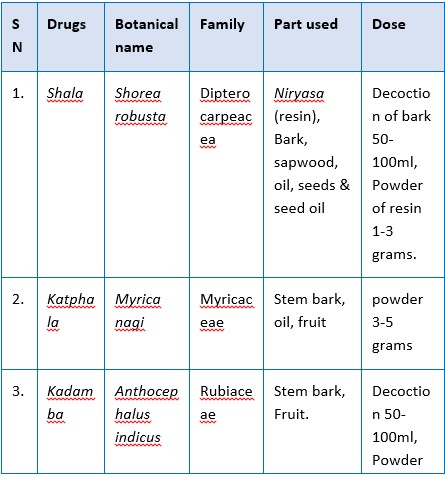Vedanasthapaka Gana - A Critical Review
DOI:
https://doi.org/10.21760/jaims.9.6.38Keywords:
Pain, Vedana, Vedanasthapaka Mahakashaya Gana, Shalya TantraAbstract
Pain is an unpleasant sensory and emotional experience that can be associated with actual or potential tissue damage.[1] In Ayurveda, Pain is explained with the word Vedana. While understanding the concept of Vedana and its treatment modality in Ayurveda, we come across many formulations which can be used efficiently in its management. One such formulation is found in Charaka Samhita, where Acharya Charaka mentions Vedanasthapaka Mahakashaya Gana, which comprises 10 drugs for direct usage in the management of pain. In this paper, the drugs of Vedanasthapaka Mahakashaya have been reviewed in detail through literature and published research work to understand their action and probable mode of action.
Downloads
References
Merskey H, Albe Fessard D, Bonica JJ, Carmon A, Dubner R, Kerr FWL, Lindblom U, Mumford JM, Nathan PW, Noordenbos W, Pagni CA, Renaer MJ, Sternbach RA, Sunderland S. Pain terms: a list with definitions and notes on usage. Recommended by the IASP subcommittee on taxonomy. PAIN 1979; 6:249-52. [PubMed] [Google Scholar]
Acharya Agnivesha, Charaka Samhitha, with Charaka Chandrika Hindi Commentary by Dr. Brahmanand Tripathi, Reprint 2008, Chaukhamba Subharati Prakashan, Varanasi, Volume-1, Sutra sthana, Chapter -4, Shloka-18, page -96.
Ambikadatta Shastri, Sushruta Samhita, Part I, Sutra sthana, 21/3,16,5,6, 8,ed 2012, Chaukhambha Sanskrit Samsthan, Varanasi, 112,117,113,114.















